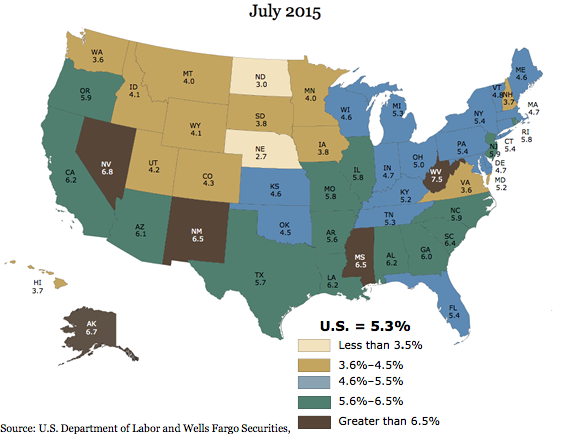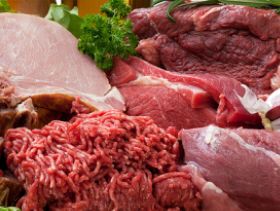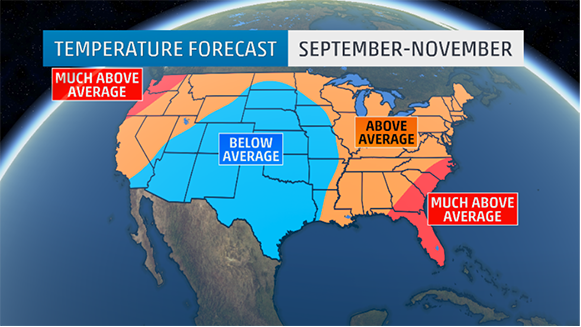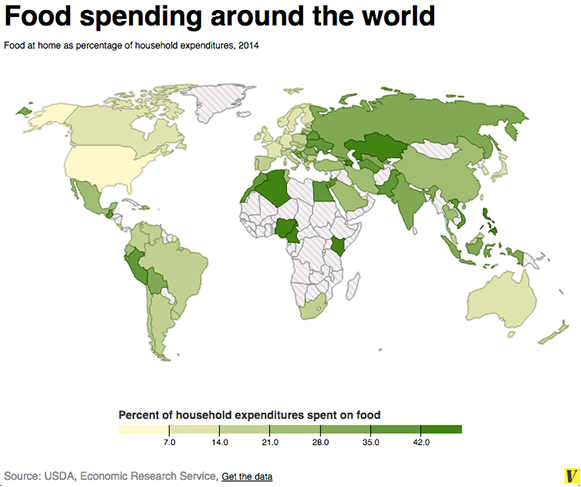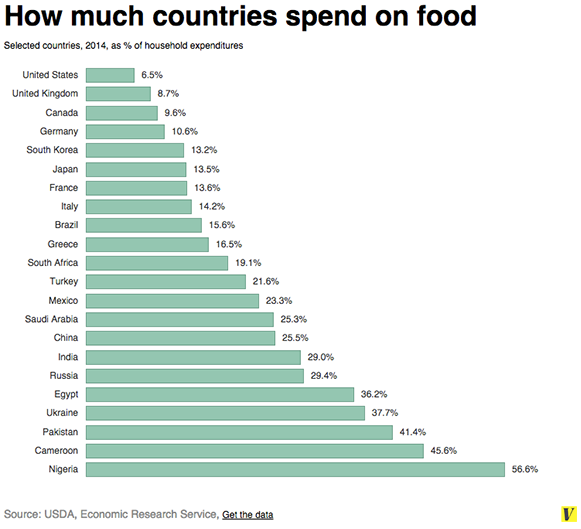Unemployment Varies Widely Across The U.S
Wells Fargo senior economist Sam Bullard compiled this interesting map showing how varied the unemployment rate is from state to state. You can clearly see that employment runs much higher than the national rate of 5.3% across a majority of the South. Something I’ve seen a lot of economists mention lately is how the energy sector has taken the big hit and hasn’t necessarily been reflected in the unemployment numbers. Since June of last year, when oil prices started to tank, over 100,000 American workers have lost their jobs in the oil and gas industry – and those are just the jobs directly related to oil companies. This week, ConocoPhillips just announced that they are laying off 10% of their workforce and with oil prices below $50, more are likely to come. That’s going to be especially hard felt in big oil-producing states like North Dakota, Texas, Louisiana and Oklahoma.
